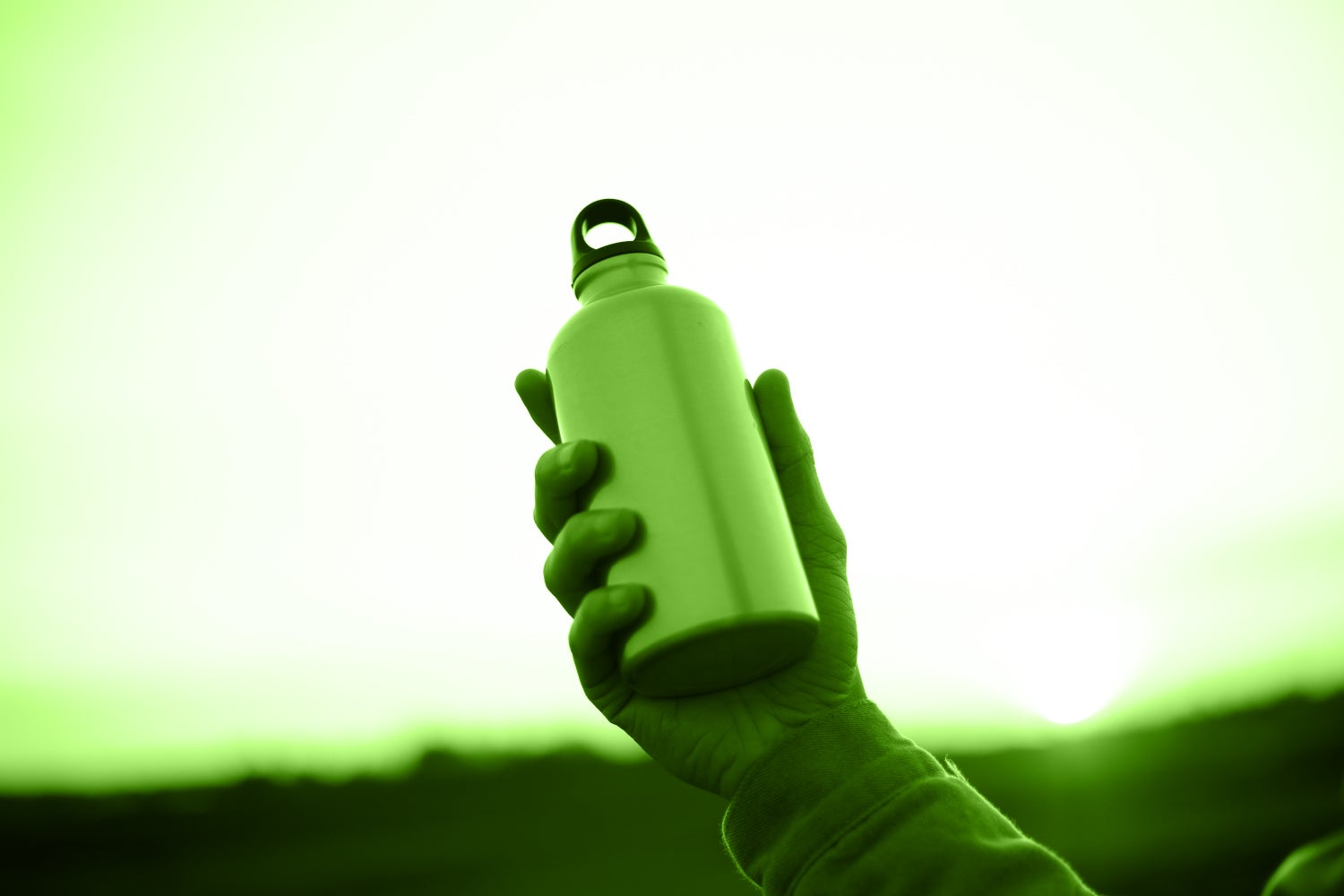The reusable water bottle is many things to many people: hydration helper, fashion statement, emotional support accessory. And whether it’s slim with a flip lid or oversized with an oh-so-trendy straw top, carrying one feels like an environmental win.
Right?
Well, at first glance, it certainly looks that way. Reusable bottles cut down on one of the world’s most pervasive pieces of waste: single-use plastic. A 2023 United Nations report estimated that more than 600 billion single-use plastic bottles are produced annually. Given that, it’s easy to assume that any reusable bottle is hands-down the better choice.
Well, it depends. Whether a reusable bottle ultimately helps the Earth comes down to two main factors: how often you use it and how you clean it. Let’s get into it.
How many times do I have to use a reusable water bottle?
Every reusable water bottle—like any product—starts out with a footprint. Think of that as a debt on a ledger. From raw material extraction to manufacturing and shipping, the environmental cost of producing a vessel is typically much higher than that of a disposable plastic one.
For the purposes of this comparison, we’re going to focus on the most popular—and often most recommended—material for reusable bottles: stainless steel. It’s tough, infinitely recyclable, hygienic, and pretty easy to clean. Plastic reusable bottles like Naglenes and CamelBaks have a relatively low manufacturing impact, but don’t last terribly long. Glass avoids the additives common in plastic, but can break easily and is heavier to ship.
That said, metal options start with more red on their ledger. According to one 2021 study, producing an aluminum bottle generates around 100 times more planet-warming emissions than making one throwaway. And, once you factor in other environmental demerits like ozone deletion and runoff, a single aluminum sipper is equivalent to 482 single-use bottles. That’d be fine, but the bottles are not super durable, which makes them less likely to last long enough to pay back their debt to the planet.
OK, so what’s the break-even point for a stainless-steel water bottle?
Pinning down that number for stainless-steel is a little slippery. The World Stainless Association says producing a bottle made from the metal requires an average of 543 grams of CO₂, which seems low considering that means it’d need only seven uses to get into the “green.” And cocktail-napkin calculations floating around the internet range from 30 to 90 uses. Again, those estimates only look at greenhouse gases, so if your main focus is on cutting emissions, you can stop there.
There’s no peer-reviewed study or lifecycle assessment we could find that puts single-use plastic and stainless bottles in a true head-to-head, which means we have to work off assumptions. An analysis out of the Political Economy Research Institute at the University of Massachusetts Amherst dug through everything and concluded the best we can do at this point is assume the high-side for a stainless-steel bottle, which is that, like aluminum, it must be used 482 times to match and surpass an equivalent amount of drinking out of single-use plastic bottles.
That feels like a lot of uses. Will a bottle last that long?
Nearly 500 uses is not nothing, but it’s also achievable. With proper care, one stainless steel bottle can last well beyond that. One estimate from World Stainless suggests it could hold up for around 670 uses but others say that, with care, it can be a companion for much longer. (For what it’s worth, we’ve held onto some sippers for 5 years or more.) Either way, if you use your bottle daily and treat it well, the environmental break-even point hits in less than two years. That’s a relatively small commitment with a nice long-term payoff. In sustainability terms, it’s a smart investment.
What about the environmental cost of cleaning the bottle?
While manufacturing usually dominates a bottle’s footprint, how you clean it also plays a role. Washing your bottle adds to its environmental costs—especially if you use a lot of hot water.
When it comes to washing bottles, putting it in an energy-efficient dishwasher is the best way to minimize the drain—but only when run with a full load. However, if your bottle’s vacuum-insulated, the dishwasher use may not be an option, because high heat can damage the seal. Always check the manufacturer’s instructions. Experts recommend a quick daily rinse and a deep clean about once a week.
What other factors play a role?
There are plenty of micro things you could weigh when choosing a bottle—like the emissions of transporting it to you or added components like plastic caps, silicone sleeves, or metal straws—but the only other universal factor to look at is what happens at the end of the bottle’s life. If a stainless-steel bottle is recycled properly at the end of this life, that gives it a better shot at a second one. If it ends up in a landfill, its value is lost.
According to a 2019 EPA analysis, aluminum has an estimated recycling rate of 36.9% while steel’s is 31.2%, meaning the majority is discarded. While each material is technically recyclable, aluminum is more commonly accepted in curbside programs. When your stainless steel bottle reaches its end, you can remove any non-metal parts and bring it to a scrap metal recycling facility. Some popular companies like HydroFlask and YETI also offer take-back recycling programs.
OK, so a reusable stainless-steel bottle is better for the environment overall?
Yes. If you use it regularly, clean it wisely, and keep it for years. A bottle bought and abandoned is a waste. And chasing trends—say, collecting every limited-edition Stanley tumbler—adds up to more wasted resources, not less. The best reusable water bottle isn’t the flashiest, or the most expensive. It’s the one you’ll use, wash efficiently, and want to hold onto for the long haul. Here are a few of our picks from a recent test.

